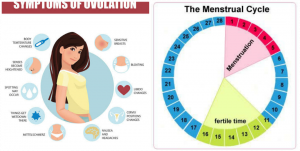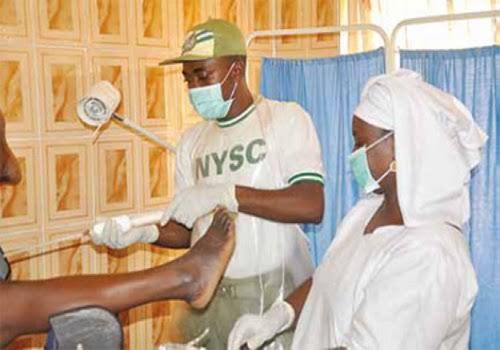how to calculate ovulation and safe period
HOW TO CALCULATE YOUR OVULATION SIMPLIFIED.
Menstruation and ovulation are part of the basic things every woman should know,since women experience these things for a good number of years in their entire lifetime.
As a woman, you are likely going to experience both menstruation and ovulation for at least 33-36 years of your lifetime, depending on the age you started menstruating and when you stop anyway. Now, you know why you should be very knowledgeable in this aspect.
Unfortunately,many women know little or nothing about their menstrual and ovulation cycles hence the need for this post arose.
However,I do not intend to bore you with the anatomy of the female reproductive system, you know that already.
I believe your biology teacher teacher did a great job on this way back in your secondary School days. I don’t also intend to put you to sleep with the physiology of menstruation and ovulation as it will be too complex for you to understand.

Nevertheless,I promise to share some of the things you need to know as far as menstruation and ovulation are concerned (with more focus on “how to calculate your ovulation”), hoping that you would appreciate this post at the end.
Menstruation also called menses or monthly period is the discharge of blood and tissues from the womb(uterus) through the vagina.
A girl child usually starts menstruating between the ages of 12 and 15 and even below this age range in some developed countries.
Menses typically lasts around 3-7days (and even more days, if there is a disorder in the body system).
The number of days between the first day of one menstrual period and the first day of the next menstrual period is called MENSTRUAL LENGTH CYCLE.
This length cycle ranges between 21-35days with 28 days as the average. A menstrual length cycle varies from one woman to another. Some women have shorter cycles while others have longer cycles.
It is very important for every woman to note that once she gets to 45-55years of age,her body system stops producing hormones that are regulate menstruation.
In a nutshell, menstruation stops and menopause begins.
Now, OVULATION is the release of an egg(or eggs as the case maybe) from a woman’s ovaries.
After the eggs are released from the ovaries,they travel down to the fallopian tubes where they remain for 24 hours waiting to be fertilized by the sperm.
The fallopian tube is the place where fertilization of eggs by sperm takes place.
So,a woman can only get pregnant if these eggs in the fallopian tube are fertilized by sperm but in a situation where fertilization does not occur,the eggs travel down to the womb where they disintegrate and are released as discharges during the next menstrual cycle.
Ovulation lasts for one day and usually occurs about 2 weeks (14days) before the next period begins.
🔥To calculate your ovulation with high degree of accuracy, you need to first of all calculate the length of your menstrual cycle. Your cycle length is the number of days between one menstrual period and another (that is the number of days it takes you before you see your menses)
🔥To calculate your cycle length,get a calendar, make a mark on the first day your menses started(that is the first day you started seeing blood) and when your menses comes again the next month or in the same month(some people see their period twice a month),also mark on your calendar the first day it started.
Then , count the number of days in between these marked points and you will have the length of your menstrual cycle.
🔥For example, assuming your menstrual period started on 10th April 2020 and then on 4th may,2020, you saw it again, to calculate your cycle length, count from 10th April to 4th may and this will give you 25 days. So your cycle length is 25days. It’s that simple!
🔥However, to be sure your cycle length is what you calculated it to be,repeat the above process for a couple of months. Reason being that cycle lengths can change from one month to another due to many factors such as irregular menses etc.
🔥Nevertheless, this is how to calculate one’s menstrual cycle length. It’s also possible and normal to see your period twice a month especially if you have a short cycle length.
Understood?😊
Hope you are getting the gist?
So, you can calculate your ovulation only when you must have accurately calculated your cycle length.
🔥Now, ovulation usually occurs 14 days after menstruation. To calculate your ovulation, ALWAYS SUBTRACT 14 DAYS FROM THE NUMBER OF DAYS IN YOUR CYCLE LENGTH.
NB: This 14 days is a constant factor.In other words, OVULATION =MENSTRUAL CYCLE LENGTH MINUS 14 DAYS.
🔥So,if your cycle length is 25 days, your ovulation will be 25days-14days=11days. What this simply means is that your ovulation is likely going to happen on 11days from the day your menses started.
🔥For instance, assuming your period began on 10th April and you have calculated your cycle length to be 25 days, to get your ovulation day, subtract 14days from 25days and you will have 11 days. Counting 11 days from 10th April (that is the day your menses started), your ovulation is most likely going to be on 20th April.
Are you following?
🔥Also note that sometimes, your ovulation may not occur exactly on the day you calculated it to be but it could be a day before that day or a day after.
Hope you are following me closely?
Ovulation is that easy to calculate if you follow the above mentioned steps.
🔥Now, shall we talk about safe and unsafe periods? Unsafe days also called fertile periods are days in the menstrual cycle in which a lady is prone to get pregnant after having unprotected sex.
The fertile period is usually 7 days (that is 5days before ovulation day, the ovulation day itself and a day after)
🔥So for a lady whose ovulation is on 20th April,her fertile periods will be 15th,16th,17th,18th,19th,20th and 21st April 2020. She’s likely to fall pregnant if she has unprotected sex within these days.
🔥So this is the best time to get pregnant for those who are eager to have children but if you are trying to avoid pregnancy,then avoid unprotected sex within this period and wait for the safe days when you can have unprotected sex with lesser fear of pregnancy.
🔥 Just to add,there are other ways of tracking one’s ovulation such as checking one’s basal body temperature,use of ovulation kit, ovulation calculator,fertility apps etc. These apps can also be helpful if you install them and put in your data correctly.
🔥 Lastly, there are many factors that can make a woman have difficulty ovulating or menstruating(that is irregular menses/ovulation or no ovulation).
Such factors include excessive physical and emotional stress, malnutrition, obesity, underweight, pelvic inflammatory disease, smoking, thyroid gland disorders, endometriosis etc.
This article is the intellectual property of Amb Kings and was adopted by www.nimedhealth.com.ng for public health education.
























